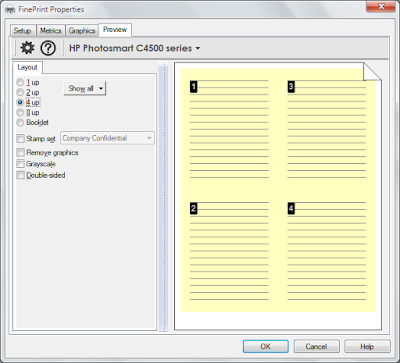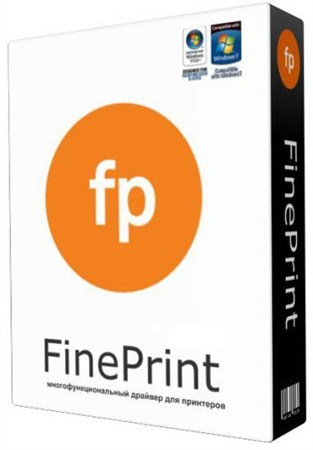

This is useful for creating booklets based on web pages, etc.

Multiple Pages on a single sheet: Print 2, 4, or 8 pages on a single sheet of paper.Ink Saver: Provides options to convert colored text to black and skip graphics.Easily add blank pages, delete pages, and re-sequence jobs. Print Preview: Universal print preview with editing capability.Features include save paper and ink, booklet printing, double-sided printing, print multiple pages onto a sheet, delete unwanted pages, electronic letterhead, watermarks, headers, footers, save as JPEG, TIF, BMP, server version, works with all printers, and Windows applications FinePrint is an Amazing and universal print preview with editing capability for Windows PC! With FinePrint working for you, annoying printing problems disappear. These chemical fingerprints, the researchers say, could be used in future research to clarify inputs and removals of methyl chloride in the atmosphere.FinePrint saves you money on paper and toner, weight in your briefcase, and time and hassle in managing your print jobs. They discovered a unique isotopic pattern that differs from those produced by other methyl chloride–degrading plants, suggesting that club moss uses an unknown mechanism to process the gas. Next, the researchers analyzed the isotopic composition of methyl chloride when it is broken down by club moss (Selaginella kraussiana).


They found that the proportions of carbon, hydrogen, and chlorine isotopes in methyl chloride produced by the royal ferns differed significantly from those produced by industrially manufactured methyl chloride. They collected and analyzed samples of royal ferns in a botanical garden in Germany. The researchers first investigated methyl chloride production by the royal fern, which is common in temperate and subtropical regions and emits large amounts of methyl chloride. Isotope analysis, they say, could help elucidate the distribution of the gas's origins and removal. Their analysis also revealed that another plant, called club moss, breaks down methyl chloride using an as yet undiscovered mechanism. Isotopes are different forms of the same chemical element with varying numbers of neutrons. In a new study published in the Journal of Geophysical Research: Biogeosciences, Hartmann and colleagues discovered that plants called royal ferns (Osmunda regalis) emit methyl chloride with an isotopic composition different from that emitted by industrial sources.


 0 kommentar(er)
0 kommentar(er)
